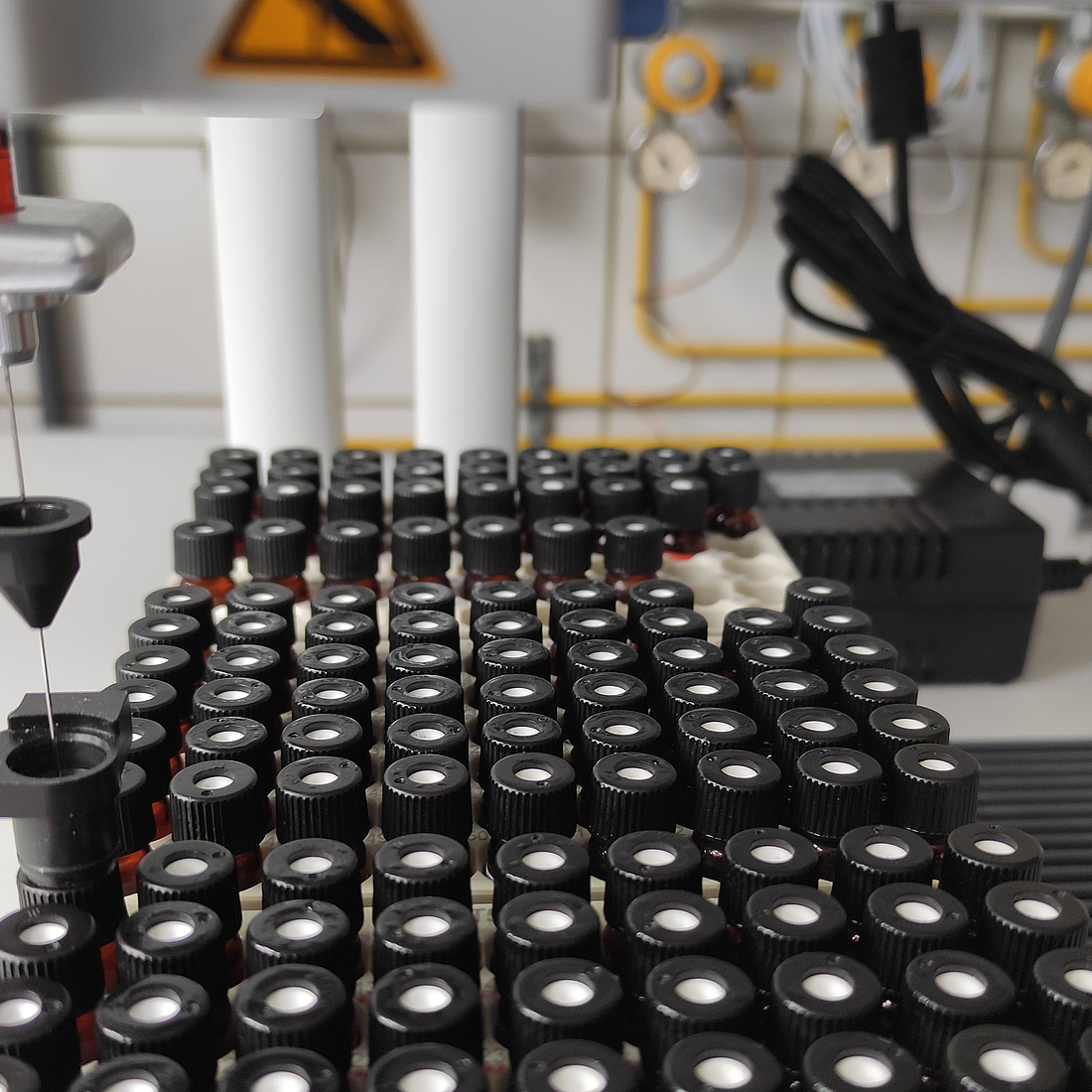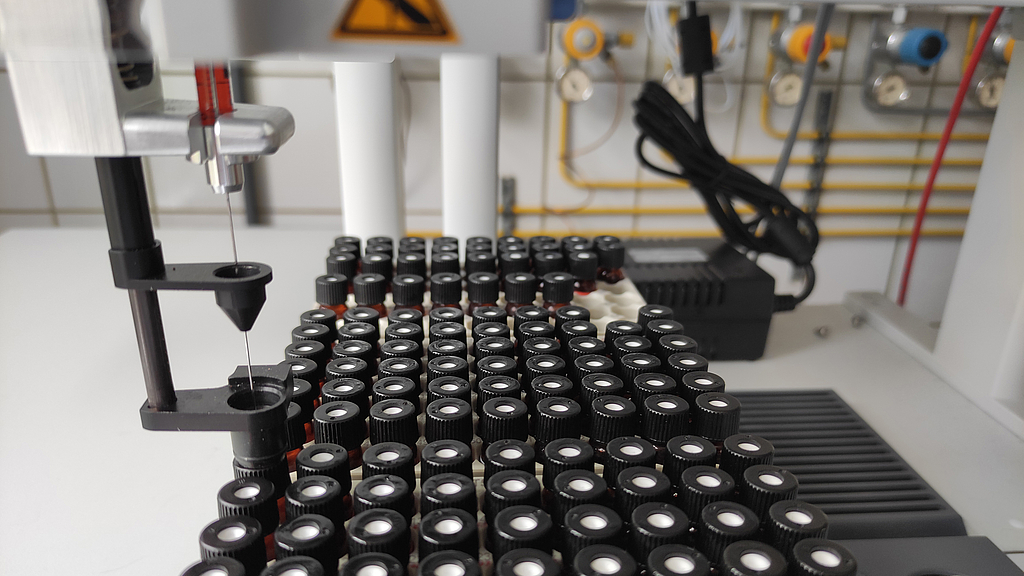Hazards in mussels

Corroded artillery shell with visible explosives and young mussels © Norwegian Defence Research Establishment (FFI)
Munitions contain explosives, with trinitrotoluene (TNT) being the most commonly used form. TNT, though, is not just explosive but carcinogenic too. That is why it is a key focus of our project’s research.
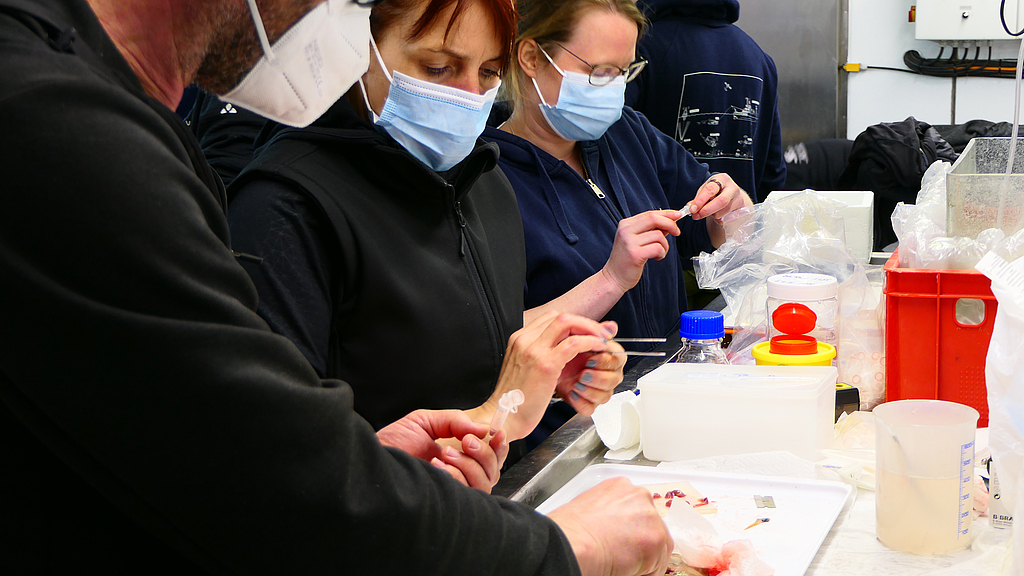
Samples being taken from fish in the research vessel’s wet lab (pictured: Matthias Brenner, Ute Marx, Claudia Thölen) © Cornelia Riml, German Maritime Museum
We examine not only water and sediment samples but also dab (Limanda limanda) and blue mussels (Mytilus edulis) for traces of TNT. While still on board, marine biologists investigate whether the organisms show health effects due to the contact with the munition.
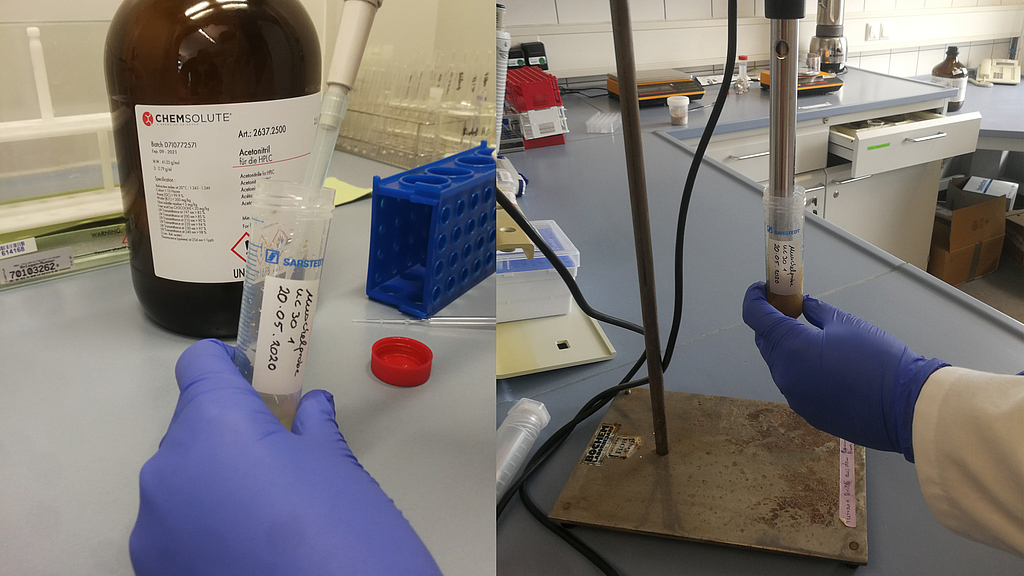
Preparation of the samples. © Insitute of Toxicology and Pharmacology for Natural Scientists, UKSH
Other specimen are taken to the lab, where toxicologists investigate whether they pose a risk to human health and the marine environment. Here, the samples are first prepared.

Tobias Bünning checks the gas chromatograph-mass spectrometer for the smallest of leaks, as even minimal amounts of room air can interfere with the analysis. © Insitute of Toxicology and Pharmacology for Natural Scientists, UKSH
They are then analysed in a special machine known as a gas chromatograph-mass spectrometer, which identifies chemical compounds.
Find out more
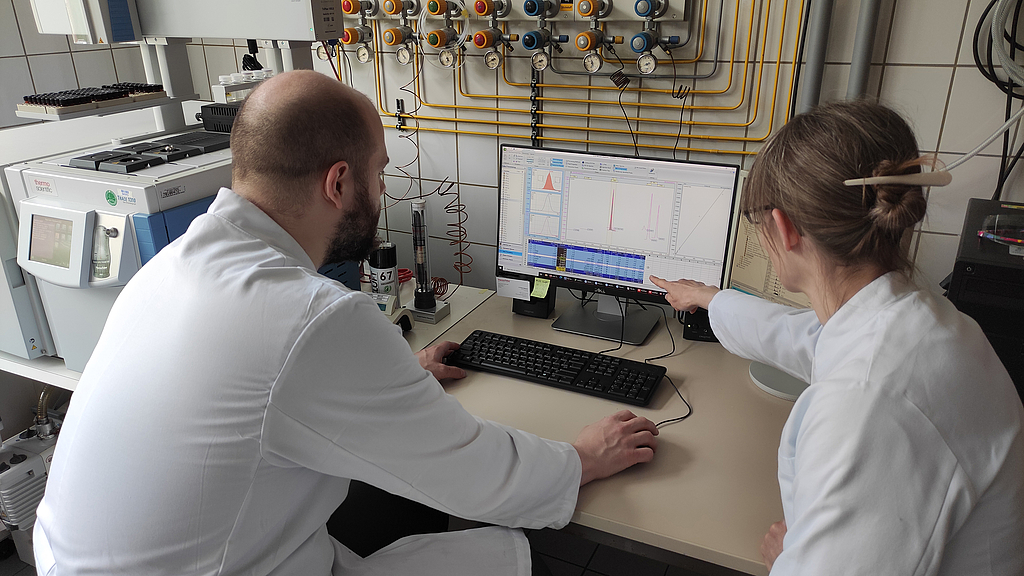
Tobias Bünning and Jennifer Strehse analysing data in the laboratory. © Jennifer Strehse, Institute of Toxicology and Pharmacology for Natural Scientists, UKSH
This allows us to clearly determine whether TNT is present in the samples, thereby demonstrating whether and in what quantity this hazardous substance is leaking from a wreck.
Partner
-

